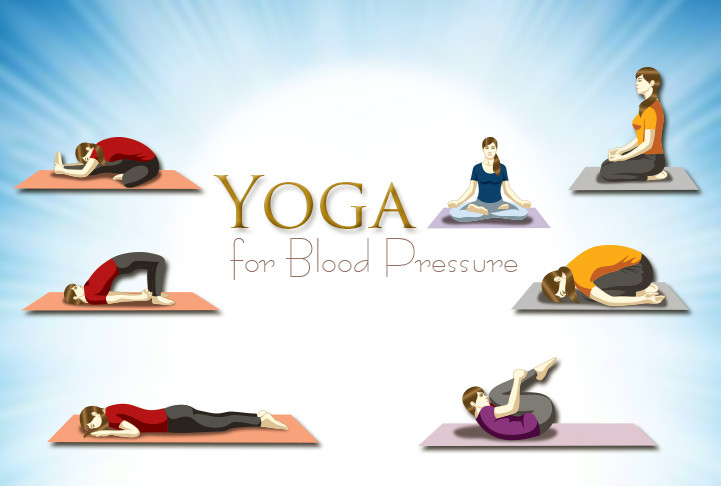Discover Yoga to ensure inner peace and lower your blood pressure.
Table of Contents
Introduction – Yoga
What is yoga?
Yoga is a holistic practice that originated in ancient India. It combines physical postures, breathing exercises, meditation, and ethical principles to promote overall well-being and harmony. The word ‘yoga’ means union, symbolizing the connection between the mind, body, and spirit. Practicing yoga regularly can help individuals find inner peace, reduce stress, and improve flexibility and strength. Additionally, research has shown that yoga can positively impact lowering blood pressure and improving cardiovascular health. Whether you are a beginner or an experienced practitioner, yoga offers many benefits for both the body and mind.
Benefits of yoga
Yoga offers numerous benefits for both the mind and body. One key advantage is its ability to promote inner peace and reduce stress. By focusing on deep breathing and gentle movements, yoga helps calm the mind and relax the body, leading to a sense of tranquility and serenity.
Additionally, regular yoga practice has been shown to lower blood pressure levels, which can have a positive impact on overall cardiovascular health. Whether you’re a beginner or an experienced practitioner, incorporating yoga into your daily routine can bring about a range of physical and mental benefits that contribute to a healthier and more balanced lifestyle.
How yoga can lower blood pressure
Yoga has been proven to be an effective practice for lowering blood pressure. Combining deep breathing, gentle stretching, and relaxation techniques helps reduce stress and promote a sense of calmness. By practicing yoga regularly, individuals can improve their cardiovascular health and decrease their risk of developing high blood pressure. Additionally, yoga can also help to improve overall physical fitness, which can further contribute to lower blood pressure levels. Overall, incorporating yoga into a daily routine can be a beneficial and natural way to find inner peace and maintain a healthy blood pressure.
Understanding Blood Pressure

What is blood pressure?
Blood pressure is the force exerted by the blood against the walls of the arteries as it flows through them. It is an important measure of the overall health of an individual, as high blood pressure can lead to serious health problems such as heart disease and stroke. Understanding blood pressure and how it can be managed is crucial for maintaining a healthy lifestyle. By practicing yoga, individuals can find inner peace and lower their blood pressure naturally. Yoga combines physical postures, breathing exercises, and meditation, which have been shown to reduce stress and promote relaxation. These practices can help regulate blood pressure levels and improve cardiovascular health. Incorporating yoga into a daily routine can be a beneficial and holistic approach to managing blood pressure and achieving overall well-being.
Types of blood pressure
There are two main types of blood pressure: primary (essential) hypertension and secondary hypertension. Primary hypertension is the most common type and has no identifiable cause. It is often related to lifestyle factors such as diet, exercise, and stress. Secondary hypertension, on the other hand, is caused by an underlying medical condition, such as kidney disease or hormonal disorders. Both types of blood pressure can be managed through various lifestyle changes and medications, but it is important to consult with a healthcare professional for proper diagnosis and treatment.
Effects of high blood pressure
High blood pressure, also known as hypertension, can have serious effects on the body. When left untreated, it can lead to an increased risk of heart disease, stroke, and kidney problems. The good news is that practicing yoga can help lower blood pressure and reduce the risk of these complications. Yoga combines physical postures, breathing exercises, and meditation, which have been shown to have a positive impact on blood pressure levels. Regular practice of yoga can not only help relax the mind and body but also improve cardiovascular health. By incorporating yoga into your daily routine, you can find inner peace and lower your blood pressure naturally.
Yoga and Stress Reduction

The link between stress and blood pressure
The link between stress and blood pressure is a well-established connection that has been studied extensively. When we experience stress, our bodies release stress hormones such as cortisol, which can cause our blood pressure to rise. This is because stress activates the body’s ‘fight or flight’ response, which prepares us to deal with perceived threats. However, when stress becomes chronic, it can have long-term effects on our blood pressure levels. Chronic stress can lead to the narrowing of blood vessels and the accumulation of plaque, both of which contribute to high blood pressure. Therefore, managing stress through practices like yoga can be beneficial in maintaining healthy blood pressure levels and promoting overall well-being.
How yoga reduces stress
Yoga is a powerful practice that has been proven to reduce stress and promote inner peace effectively. By combining physical postures, breathing exercises, and meditation, yoga helps to calm the mind, relax the body, and release tension. The practice of yoga activates the parasympathetic nervous system, which is responsible for the body’s rest and relaxation response. This activation leads to a decrease in the production of stress hormones, such as cortisol, and an increase in the production of feel-good hormones, such as serotonin and endorphins. Additionally, yoga encourages mindfulness and self-awareness, allowing individuals to manage their stress levels better and cultivate a sense of tranquility. Whether it’s through gentle stretching or challenging poses, yoga provides a holistic approach to reducing stress and finding inner peace.
Specific yoga poses for stress reduction
Yoga offers a wide range of specific poses that are highly effective in reducing stress and promoting relaxation. These poses target different areas of the body and help release tension, calm the mind, and restore balance. One such pose is the Child’s Pose, which gently stretches the back, hips, and thighs while promoting deep breathing and a sense of surrender. Another pose, the Standing Forward Bend, helps to release tension in the neck, shoulders, and hamstrings while also calming the nervous system. The Corpse Pose, also known as Savasana, is a deeply restorative pose that allows for complete relaxation and rejuvenation. By incorporating these specific yoga poses into your practice, you can experience a significant reduction in stress levels and find inner peace.
Yoga and Physical Activity

Yoga as a form of exercise
Yoga, as a form of exercise, offers numerous benefits for both the body and mind. Not only does it help improve flexibility, strength, and balance, but it also promotes relaxation and stress reduction. The practice of yoga involves a combination of physical postures, breathing exercises, and meditation, which work together to enhance overall well-being. Regular yoga practice has been shown to lower blood pressure, increase cardiovascular health, and improve mental clarity. Whether you are a beginner or an experienced practitioner, incorporating yoga into your fitness routine can be a transformative experience that brings inner peace and harmony to your life.
Benefits of physical activity for blood pressure
Regular physical activity, such as yoga, has been shown to have numerous benefits for blood pressure. Yoga can help lower blood pressure by promoting relaxation and reducing stress levels. The deep breathing exercises and gentle movements involved in yoga can also improve circulation and enhance cardiovascular health. Additionally, practicing yoga regularly can contribute to weight management, which is important for maintaining healthy blood pressure levels. Overall, incorporating yoga into your routine can be a beneficial and natural way to find inner peace and lower blood pressure.
Recommended yoga routines for physical activity
Yoga offers many benefits for physical activity, making it an ideal choice for those looking to stay active and improve their overall well-being. There are several recommended yoga routines that can help individuals achieve their fitness goals. Whether you’re a beginner or an experienced yogi, there is a routine suitable for every fitness level. From gentle stretching and relaxation poses to more intense and challenging sequences, yoga provides a holistic approach to physical activity that strengthens the body and calms the mind. Incorporating these recommended yoga routines into your fitness regimen can help you find inner peace while lowering blood pressure and promoting overall health and wellness.
Breathing Techniques in Yoga

The importance of breath control
Breath control, also known as pranayama, is fundamental to yoga practice. It involves consciously regulating the breath to achieve a state of calm and relaxation. The importance of breath control in yoga cannot be overstated, as it not only helps to deepen the mind-body connection but also has numerous health benefits. One of the key benefits of breath control is its ability to lower blood pressure. By slowing down and deepening the breath, yoga practitioners can activate the body’s relaxation response, which in turn helps to reduce stress and promote a sense of inner peace. Additionally, regular practice of breath control can improve lung function, increase oxygen intake, and enhance overall respiratory health. Whether you are a beginner or an experienced yogi, incorporating breath control into your practice is essential for reaping the full benefits of yoga and finding inner peace.
Breathing techniques for relaxation
Breathing techniques are an essential part of any yoga practice, especially when it comes to relaxation. These techniques help calm the mind, reduce stress, and promote a sense of inner peace. One popular breathing technique is called the 4-7-8 breath, where you inhale for a count of 4, hold your breath for a count of 7, and exhale for a count of 8. This technique has been shown to activate the body’s relaxation response and lower blood pressure. Another effective technique is alternate nostril breathing, where you use your thumb to close one nostril while inhaling through the other, then switch nostrils and exhale. This technique helps balance the energy in the body and promotes a state of deep relaxation. Incorporating these breathing techniques into your yoga practice can enhance your ability to find inner peace and lower your blood pressure.
Breathing exercises for blood pressure regulation
Breathing exercises are an effective way to regulate blood pressure and promote overall well-being. By focusing on deep, slow breaths, individuals can activate the body’s relaxation response, which helps to lower blood pressure. One popular technique is diaphragmatic breathing, where individuals breathe deeply into their abdomen, allowing the diaphragm to expand fully. This technique helps reduce stress and anxiety and improves oxygen flow throughout the body, promoting a sense of calm and inner peace. Another beneficial breathing exercise is alternate nostril breathing, which involves inhaling through one nostril and exhaling through the other. This practice helps balance the body’s energy and can positively impact blood pressure levels. Incorporating these breathing exercises into a regular yoga practice can be a powerful tool for managing blood pressure and finding inner peace.
Conclusion

Summary of the benefits of yoga for blood pressure
Yoga has been proven to have numerous benefits for individuals with high blood pressure. Regular practice of yoga can help lower blood pressure levels by reducing stress and promoting relaxation. The combination of deep breathing exercises, gentle stretching, and meditation techniques in yoga helps calm the mind and relax the body, decreasing blood pressure. Additionally, yoga improves overall cardiovascular health, increases flexibility, and promotes a sense of well-being. Incorporating yoga into a daily routine can effectively and naturally manage and lower blood pressure levels.
Tips for incorporating yoga into your daily routine
Incorporating yoga into your daily routine can have numerous benefits for both your physical and mental well-being. Here are some tips to help you make yoga a regular part of your day. First, set aside a specific time each day for your yoga practice. Whether it’s in the morning, during your lunch break, or in the evening, having a consistent schedule will make it easier to stick to. Second, start with simple poses and gradually increase the difficulty as you become more comfortable. Remember, yoga is a journey, and it’s important to listen to your body and not push yourself too hard. Third, find a quiet, peaceful space to practice without distractions. This will help you focus and fully immerse yourself in the practice. Finally, don’t be afraid to seek guidance from a qualified yoga instructor or use online resources to learn new poses and sequences. With these tips, you can easily incorporate yoga into your daily routine and experience the many benefits it has to offer.
Final thoughts on finding inner peace through yoga
In conclusion, finding inner peace through yoga is a transformative journey that benefits our mental and emotional well-being and positively impacts our physical health. By practicing yoga regularly, we can learn to quiet the mind, let go of stress and anxiety, and connect with our inner selves. This ancient practice offers a sanctuary for self-reflection and self-discovery, allowing us to find balance, harmony, and a sense of calm amidst the chaos of everyday life. So, whether you are a beginner or an experienced yogi, embrace the power of yoga and embark on a path towards inner peace and lower blood pressure.
Next Steps:
Now that you have learned about the incredible benefits of yoga for finding inner peace and lowering blood pressure, it’s time to take the next step towards a healthier and more balanced life. If you are ready to embark on this transformative journey, visit NegativeStress.com, a trusted online resource that provides valuable information and guidance on stress management techniques, including yoga. Explore their wide range of articles, videos, and resources to deepen your understanding of yoga’s positive impact on your mental and physical well-being. Don’t wait any longer; start your yoga practice today and experience the profound effects it can have on your overall health and happiness. Visit NegativeStress.com now and take the first step towards a calmer, more peaceful life.




